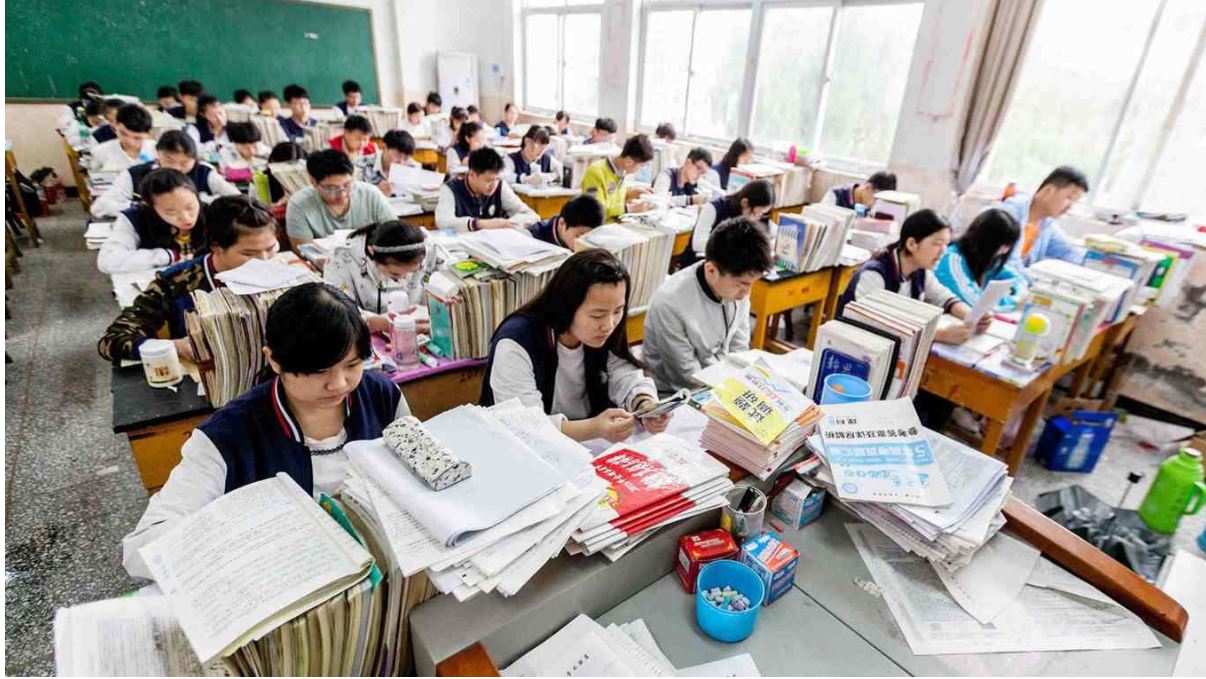China’s Education Revolution: Fostering Talent for a Dynamic Future
Beijing, China – China is undergoing a profound transformation in its education system, driven by a comprehensive reform agenda designed to better address the evolving needs of its students, society, and economic development. This educational revolution is moving beyond traditional metrics, focusing on diversifying development pathways, aligning professional training with national demand, and integrating innovative approaches to learning. The reforms are not merely incremental changes but represent a strategic pivot towards cultivating a more adaptable, skilled, and globally competitive workforce.
Diversifying Pathways and Empowering Students
At the heart of China’s education reform is a commitment to providing diverse development pathways for students, moving away from a singular focus on higher education enrollment. This involves significant adjustments to the allocation of education resources, with increased emphasis on developing middle schools in county-level regions and advancing reforms in senior high school and college entrance examinations [1]. The goal is to create a more equitable and flexible system that caters to a wider range of talents and aspirations.
In higher education, a notable innovation is the “outstanding engineer education and training program.” This program allows postgraduate students to apply for academic degrees by submitting patents or product and project designs, a historic departure from the traditional requirement of solely dissertation-based degree awards [1]. This reform signifies a practical approach to education, valuing real-world application and innovation alongside theoretical knowledge.
Furthermore, China is actively working to better align the supply and demand of professionals. The Ministry of Education now releases an annual list of urgently needed disciplines, guiding educational institutions to tailor their programs to meet the demands of social and economic development [1]. This proactive approach ensures that the education system is responsive to the country’s evolving industrial and technological landscape.
Key Pillars of the Reform
Minister of Education Huai Jinpeng outlined several priorities for 2025, emphasizing the critical role of education in shaping values, aligning with national objectives, enhancing public education, and fostering global leadership [2]. These priorities are being addressed through various initiatives:
Curriculum Modernization: Updating curricula to include critical thinking, creativity, and digital literacy, preparing students for the challenges of the 21st century.
Teacher Development: Investing in continuous professional development for educators, ensuring they are equipped with the latest pedagogical methods and subject matter expertise.
Balanced Resource Allocation: Redistributing educational resources to reduce disparities between urban and rural areas, ensuring quality education is accessible to all.
AI Education Mandate: China has mandated AI education nationwide by 2025, starting with Beijing and expanding across the country. This initiative aims to boost tech skills from an early age, establishing a tiered AI education system spanning primary, junior high, and senior high schools [3, 4].
Higher Education at the Forefront
China’s 2024–2035 Education Master Plan places higher education at the forefront of its strategic vision. The plan aims to boost research universities, expand access, and foster global collaboration, positioning China as a global leader in higher education [5]. The 2025 education budget, officially adopted during the March Two Sessions, provides valuable insights into the country’s ongoing commitment to modernization and expansion in this sector [6].
This focus on higher education is crucial for driving innovation, conducting cutting-edge research, and producing the highly skilled professionals needed to sustain China’s economic and technological growth. The emphasis on research universities is particularly important for fostering a culture of inquiry and discovery, which is essential for breakthroughs in science and technology.
Trend Analysis: Education as a Strategic National Asset
China’s education reforms reflect several significant trends:
- Human Capital Development: Education is increasingly viewed as a strategic national asset, crucial for developing the human capital necessary to achieve China’s long-term development goals, including technological self-reliance and global leadership.
- Skills-Based Learning: A shift towards skills-based learning and practical application, as evidenced by programs like the “outstanding engineer education and training program,” indicates a move away from purely theoretical instruction.
- Digital Transformation of Education: The integration of AI and digital technologies into the curriculum and pedagogical methods is a major trend, preparing students for an increasingly digital world and leveraging technology to enhance learning outcomes.
- Equity and Access: Efforts to balance resource allocation and develop middle schools in county-level regions highlight a commitment to educational equity and ensuring that all students, regardless of their geographical location, have access to quality education.
- Global Competitiveness: By fostering research universities, expanding access, and promoting international collaboration, China aims to enhance its global competitiveness in education and research, attracting top talent and contributing to global knowledge creation.
Conclusion: Building a Foundation for Future Prosperity
China’s comprehensive education reform is a testament to its forward-thinking vision and its understanding of education as the bedrock of national strength and prosperity. By diversifying educational pathways, aligning professional training with national needs, and embracing technological innovation, China is building a robust and adaptable education system. This system is not only designed to meet the demands of a rapidly changing world but also to cultivate a generation of innovative, skilled, and globally-minded citizens. As these reforms continue to unfold, China is poised to solidify its position as a leader in educational excellence, fostering talent that will drive its dynamic future and contribute significantly to global progress.
References
[1] English.www.gov.cn. (2025, September 23). China advances education reform to address needs of students, society. Retrieved from https://english.www.gov.cn/news/202509/23/content_WS68d23eebc6d00fa19f7a2a62.html
[2] Ministry of Education of the People’s Republic of China. (2025, January 9). Minister of Education addresses 2025 National Education Work Conference. Retrieved from http://en.moe.gov.cn/news/press_releases/202501/t20250114_1175623.html
[3] The AI Track. (2025, March 10). China Mandates AI Education Nationwide by 2025, with Beijing Leading the Charge. Retrieved from https://theaitrack.com/china-mandates-ai-education/
[4] Public Services Alliance. (2025, June 24). Source listings for China AI in Ed previous post. Retrieved from https://publicservicesalliance.org/2025/06/24/source-listings-for-china-ai-in-ed-previous-post/
[5] UNESCO IESALC. (2025, June 12). Higher education takes centre stage in China’s new Education Master Plan. Retrieved from https://hepo.iesalc.unesco.org/pc/page/content/202505_chn_HEEdPlan/
[6] Worlddidac. (n.d.). China’s 2025 Education Budget: Modernization, Expansion, and Opportunities for International Education Providers. Retrieved from https://worlddidac.org/news/chinas-2025-education-budget-modernization-expansion-and-opportunities-for-international-education-providers/







